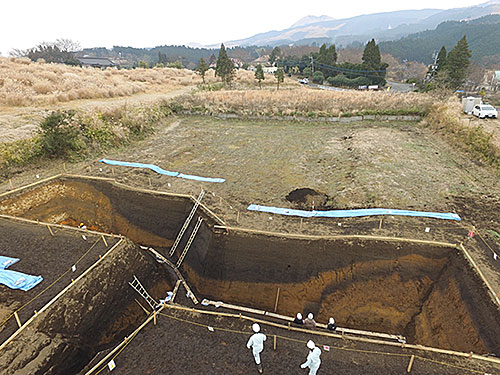 Active Fault Research Group
Active Fault Research Group
Active faults that have repeatedly ruptured in the recent past have potential to generate large earthquakes in the future. In order to reduce the damage due to such earthquakes, it is fundamental to elucidate the distribution, geometry and past behavior of active faults.
We investigate major active faults inland and offshore Japan by integration of various methods such as geological and geomorphological mapping, paleoseismological trenching, boring and seismic profiling to better define the extent and timing of the past rupture events as well as recurrence intervals. On the basis of these paleoseismological data, we evaluate the long-term possibility of future earthquakes for each fault or fault group. These data are gathered into an active fault database and opened to public.
Crustal deformation associated with earthquakes including surface ruptures provides useful insights not only for understanding rupture dynamics but also for extracting past earthquake rupture events from geologic and geomorphic records. We perform field investigation of the crustal deformation immediately after earthquakes.
We also conduct basic study to further improve our capability for identifying active faults with weak geomorphic expressions and for understanding rupture extent and spatial distribution of potential source of moderate earthquakes.

Member
- Takashi Ogami (Leader, Group)
- Tadashi Maruyama (Chief Senior Researcher)
- Takashi Azuma (Senior Researcher)
- Hisao Kondo (Senior Researcher)
- Leggett Kai (Researcher)
- Kosuke Ota (Researcher)
- Kaoru Tabata (Research Assistant)
- Yuko Kono (Technical Staff)
My research focuses on using the geologic and geomorphic records to understand upper crustal deformation associated with faulting. I investigate Quaternary faulting history by combining field-based geologic investigations (e.g. structural mapping, drilling, trenching) with high-resolution topographic datasets (e.g. LiDAR)
My research focus on paleoseismological works in the field on major active fault zone in Japan, Turkey, and Asian countries. In particular, I have carried out three-dimensional trenching survey across strike-slip faults, in order to reconstruct the timing and displacement associated with paleoearthquake events. I also have interest in recurrence models for large earthquake to assess magnitude and timing of future earthquake occurrence.

